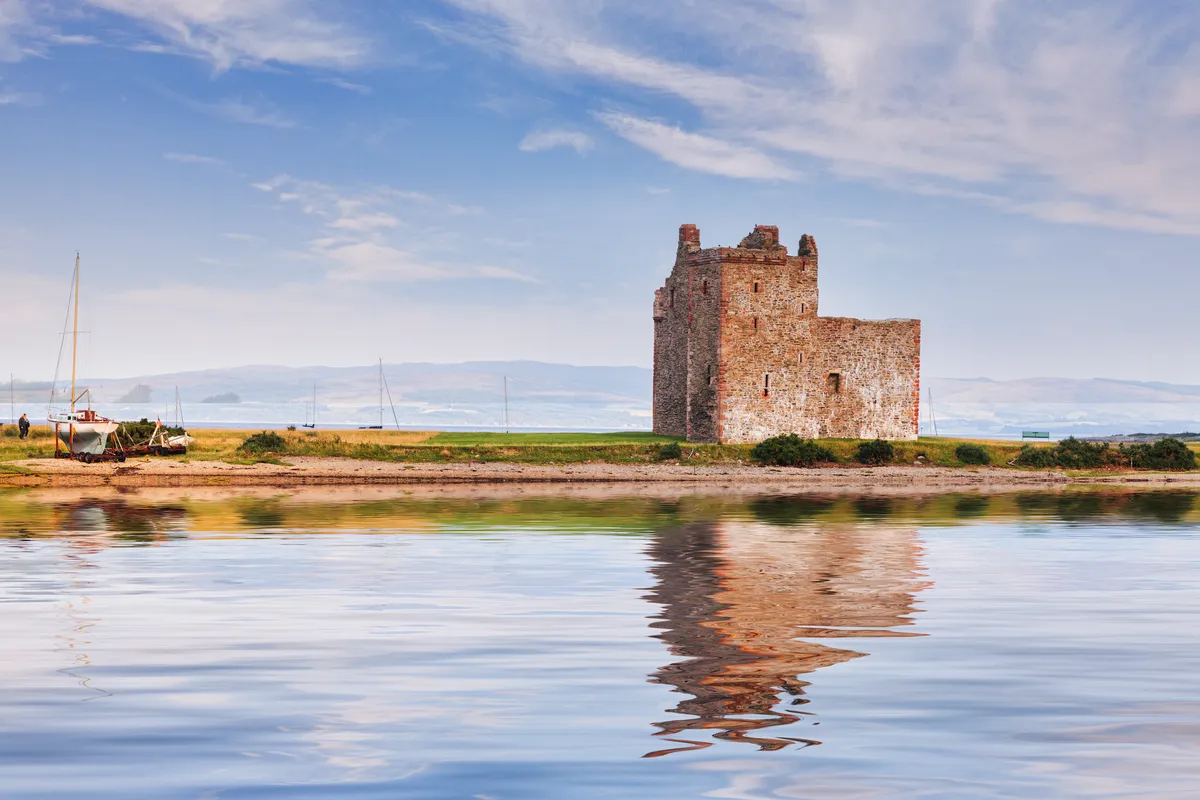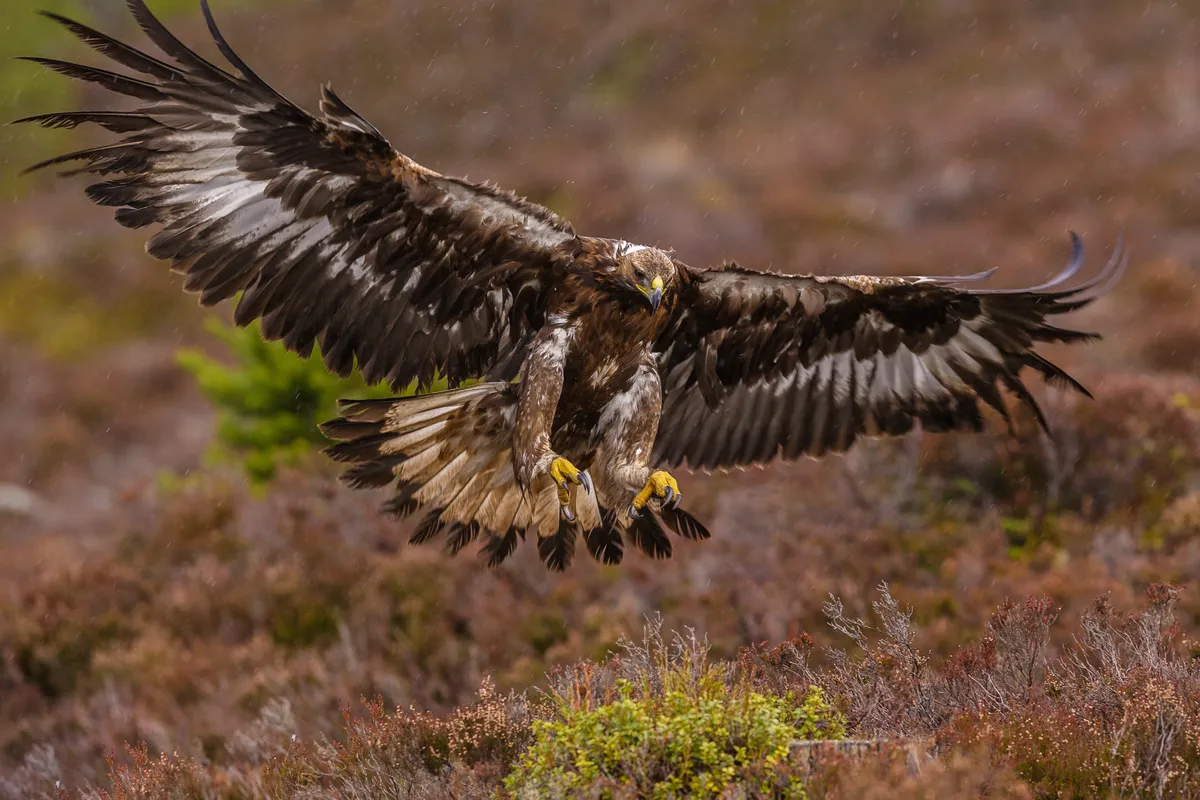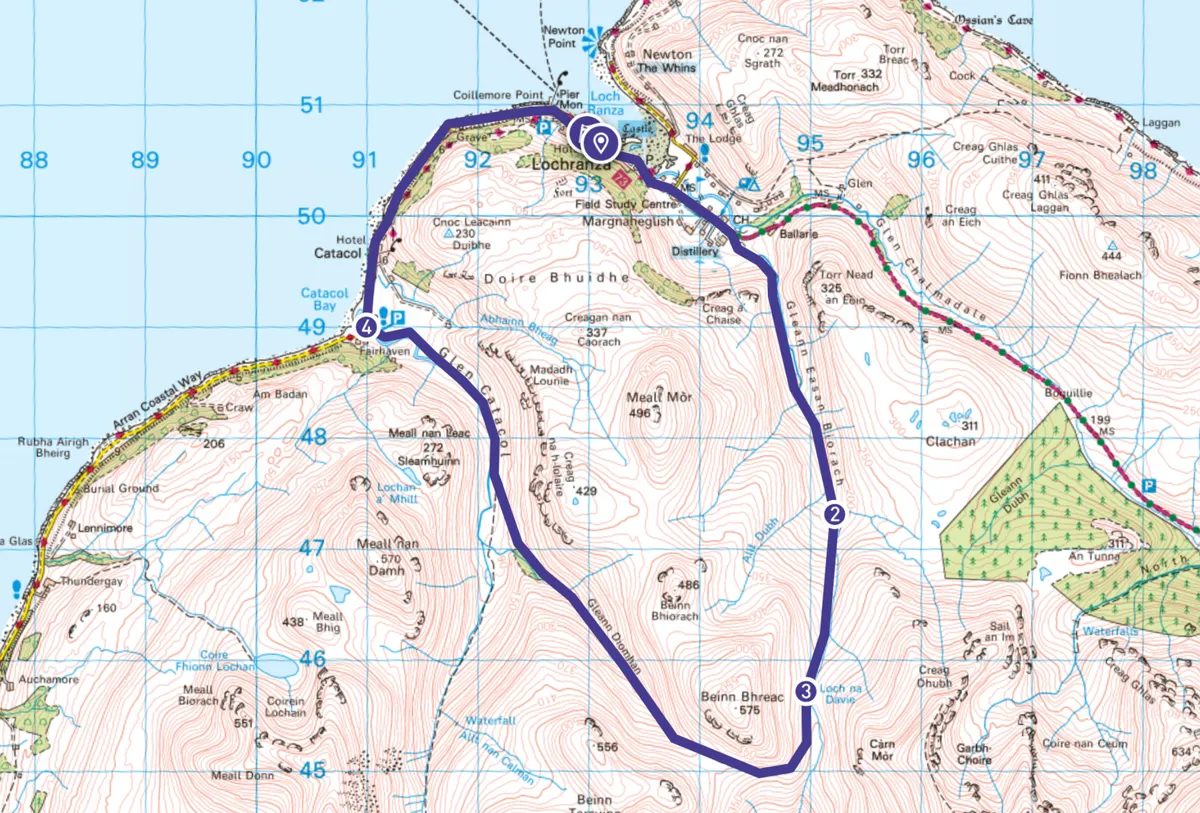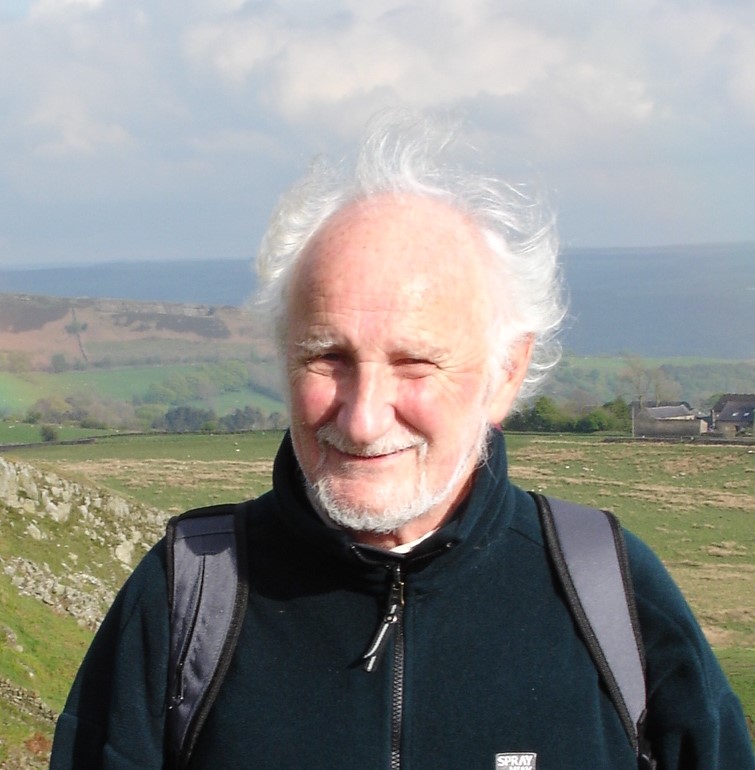Arran has many attractions, but if you are looking for peaceful surroundings, rugged Highland scenery and spectacular wildlife, the place to go is Lochranza at the very northern tip of the island.
A walk here on a warm summer's day is truly memorable, as there is a good chance of seeing golden eagles quartering the moorland looking for anything that stirs that might be their next meal. This alone makes the walk a marvellous experience, but you're also likely to see herds of red deer.
No one can guarantee that everyone who comes this way will see both eagles and red deer, but there is a very good chance that you will – and even if you are very unlucky, this is still a wonderful Highland walk to enjoy.

Lochranza and Beinn Bhreac walk
10 miles/16km | 7 hours | challenging
1. Castles and whisky
The walk starts at the Lochranza Hotel, and takes the road heading inland and passing the ruined castle on the promontory. It appears like a typical late medieval tower house but is actually built from a much earlier hall on this site.
Stay on the road past the Youth Hostel and the new Arran Distillery where they make fine single malt whisky. Just before reaching the little bridge, turn right onto the path up Gleann Easan Biorach.
There is an obvious track beside the clear waters of the little river, but it soon becomes much rougher and stonier as the river gets busier, tumbling through a series of falls in a rocky gorge. It is now that you need to keep binoculars handy, for this is eagle territory.

2. Head to the top
There is a steady climb and up ahead the view to the left is dominated by the rugged summit of Arran’s highest mountain Goat Fell. Then the path levels out and enters a stretch of often boggy moorland before beginning to climb again, leaving the rather soggy land behind, towards the shapely hill of Beinn Bhreac.
This section of the walk ends at Loch na Davie. The water here is remarkably pure – one of the factors that led to the decision to build the distillery in the 1990s. As whisky connoisseurs know, it is the quality of Highland water that makes the whisky special. Those who are looking for a short walk can retrace their steps, but those who are prepared to go further can turn this into a circular walk – a great deal of which will now be downhill and quite easy going.
3. Rare sight
To continue, leave the shallow loch to your left and take the path that swings around the southern flank of the hill and then follow it down into Gleann Diorrhan. The next part of the walk is a true delight. The obvious path runs alongside the burn towards a patch of woodland. A deer fence has been erected to protect the area that contains the very rare Catacol whitebeam tree – so rare, in fact, that the area contains the only two examples in the whole of the country. Enter and leave the area via a pair of kissing gates.
Now the walk joins Glen Catacol, where the river rushes down over a series of granite slabs. The path runs along the side of the river, overlooked by the steep slopes of a craggy hill; the valley gradually opens out and the path arrives at the coast road.

4. Historic homes
At the road turn right. This is a very quiet road that hugs the coast, with views across the water to the Mull of Kintyre. The row of cottages is known as the Twelve Apostles, each of which is slightly different. They were built to house crofters who had been turned out of their homes by the infamous Highland Clearances, and who were now able to make a new living by fishing.
Just beyond the Catacol Hotel is a mound of stones marking a sailor’s grave. He was buried here in 1854 away from habitation, as locals feared he would infect them with the plague. It’s become a custom for anyone coming this way to pick up a pebble from the beach to add to the pile to show that the unfortunate man is not forgotten. The road leads back past the ferry terminal. What could be a better end to an exhilarating day’s walking than a dram of malt whisky from just down the road?
Lochranza and Beinn Bhreac map
Lochranza and Beinn Bhreac walking route and map

